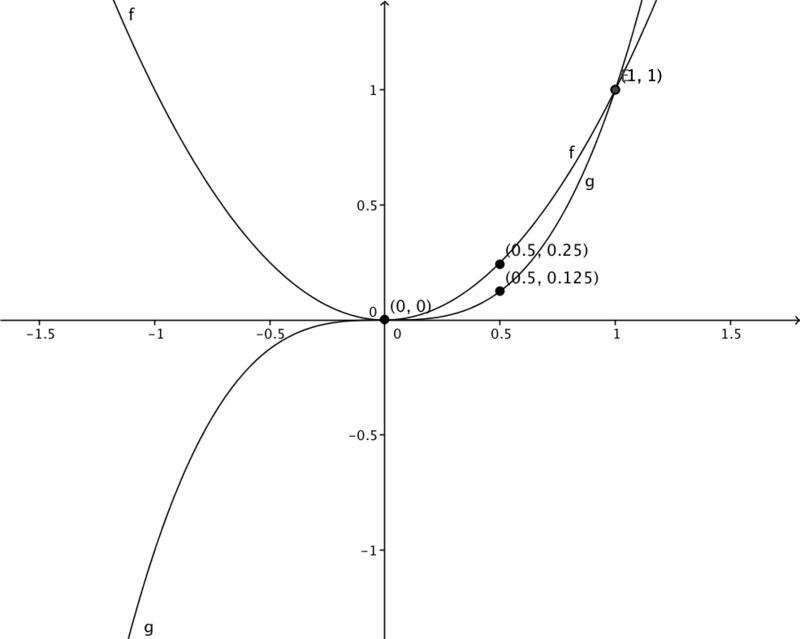Graphs of Power Functions
Sketch the graphs of the functions described by $\displaystyle f(x)=x^2$ and $\displaystyle g(x)=x^4$ on the same axes, being careful to label any points of intersection. Also, find and label $\displaystyle\left(\frac{1}{2}, f(\frac{1}{2})\right)$ and $\displaystyle\left(\frac{1}{2}, g(\frac{1}{2})\right)$.
Sketch the graphs of the functions described by $f(x)=x^3$ and $g(x)=x^5$ on the same axes, being careful to label any points of intersection. Also, find and label $\displaystyle\left(\frac{1}{2}, f(\frac{1}{2})\right)$ and $\displaystyle\left(\frac{1}{2}, g(\frac{1}{2})\right)$.
Sketch the graphs of the functions described by $f(x)=x^2$ and $g(x)=x^3$ on the same axes, being careful to label any points of intersection. Also, find and label $\displaystyle\left(\frac{1}{2}, f(\frac{1}{2})\right)$ and $\displaystyle\left(\frac{1}{2}, g(\frac{1}{2})\right)$.



